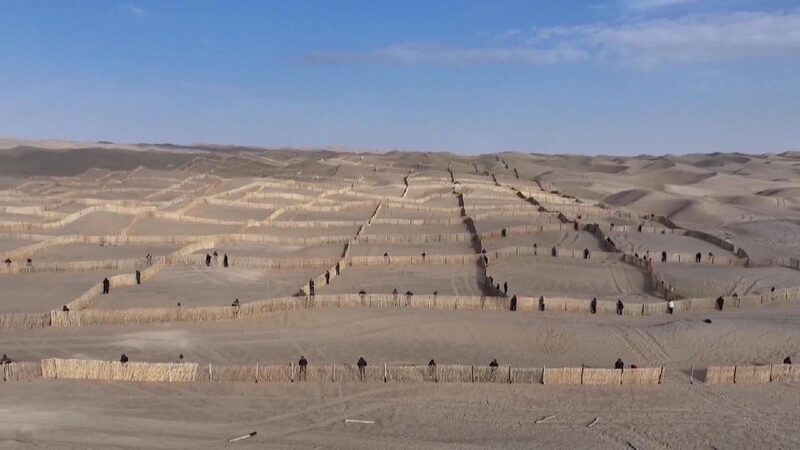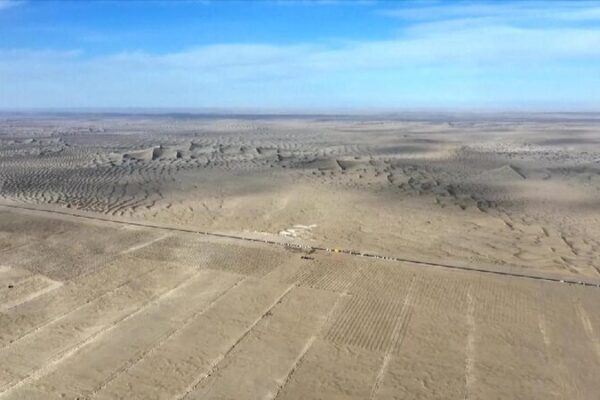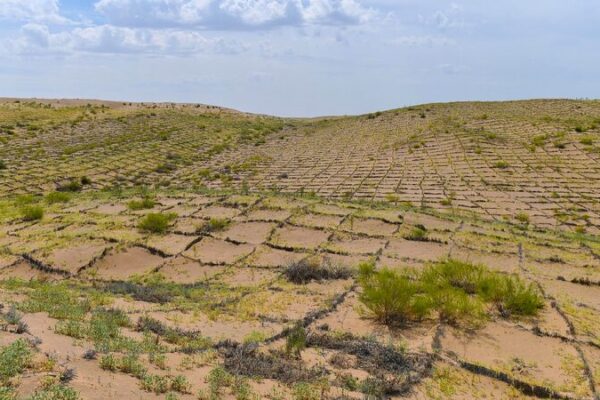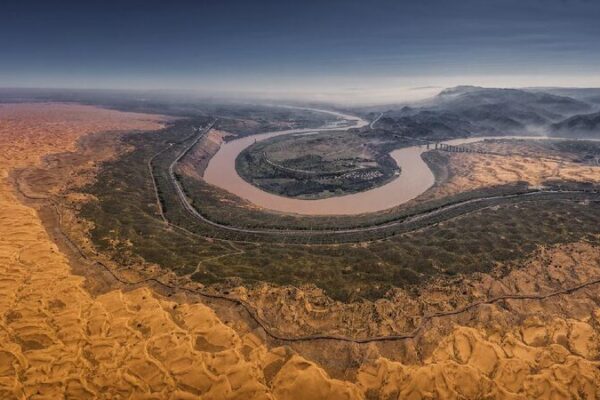China has achieved a remarkable environmental milestone by completely encircling the vast Taklimakan Desert with a massive green belt stretching over 3,046 kilometers. The Taklimakan, often called the “Sea of Death,” is China’s largest desert, covering an area of 337,600 square kilometers in the Xinjiang Uygur Autonomous Region.
On Thursday morning, the final stretch of the green belt was completed as volunteers planted desert poplar, saxaul, and red willow in Yutian County on the desert’s southern edge. This achievement marks the culmination of more than 40 years of persistent efforts to combat desertification in the region.
The last section of the green belt, approximately 285 kilometers long, was the most challenging due to severe wind and sand hazards. Targeted and scientific measures were implemented to overcome these obstacles, ensuring the successful closure of the belt.
“This green belt functions as an ecological barrier,” said Tuhti Rahman, director of the Xinjiang regional forestry and grassland bureau. “It guarantees the stability of agricultural production, improves the urban living environment, and promotes Xinjiang’s economic and social development.”
In addition to environmental benefits, the project has also fostered the development of sand industries, such as cultivating cistanche and other desert-adapted crops, providing economic opportunities for local residents.
The Taklimakan Desert control project is part of China’s ambitious Three-North Shelterbelt Forest Program (TSFP), the world’s largest afforestation initiative aimed at tackling desertification. Launched in 1978, the TSFP is scheduled for completion by 2050 and aspires to create a fully functional and unbreakable “Green Great Wall” in northern China.
Since its inception, the TSFP has expanded China’s afforested areas by 32 million hectares, with forest coverage in the program’s regions rising from 5.05% to 13.84%. By 2050, the program aims to cover over 4 million square kilometers across 13 provincial-level regions, accounting for 42.4% of the country’s total land area.
Over the past 46 years, significant progress has been made in controlling desertification and soil erosion, protecting approximately 30 million hectares of farmland.
China’s commitment to environmental sustainability through projects like the Taklimakan green belt and the TSFP showcases the country’s dedication to combating environmental challenges and promoting ecological security.
Reference(s):
cgtn.com








